Cumberland raspberry variety (black raspberry)
Many summer residents and gardeners have already discovered such an interesting and very useful culture as black raspberry or, as it is called in its homeland in North America, Black cap. At the same time, on the territory of our country, the phrase "black raspberry" sometimes causes bewilderment among many, a playful smile or exclamations: of course, it is growing with me! And they show a photo of a blackberry with small rounded fruits. But after all, black raspberries have been known culturally for a very, very long time. Many “connoisseurs” classify it as a blackberry, others as an ezemalin (a hybrid between raspberries and blackberries), for example, placing it on a par with the Boysenberry variety. Remember, black raspberries are black raspberries, a direct relative of red and certainly not a hybrid with blackberries. And a striking representative of this culture is, so to speak, the "great-grandfather" of Cumberland, which has been successfully cultivated all over the world for over 100 years.
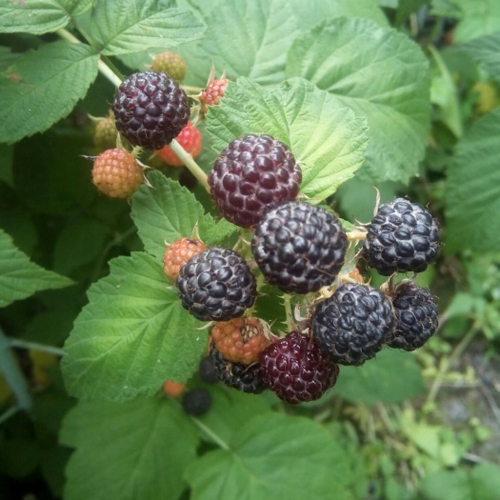
Story
The homeland of black raspberries is North America. This culture can be found in many states, it is very common in the wild in the east of the country, in the coastal regions along the Atlantic and Pacific oceans. Grows in woodlands, on forest edges, on forest borders. Preference is given to partial shade, moist and rich loamy soil. In areas where it is very hot and sunny and where rain is rare, the berries develop poorly and lose their quality. In turn, in full shade, black raspberries produce little or no fruit. Reproduction and distribution over long distances in the wild is performed by animals that eat it, and birds especially succeed in this.
Rubus occidentalis (Latin name for black raspberry) is a species of raspberry and is closely related to red (Rubus idaeus and Rubus strigosus). This common name for the black-fruited culture is shared with the closely related Rubus leucodermis, common in the western United States. In Ukrainian forests, you can also often find this wild plant, especially in its central part. Including those with yellow fruits. The black color of the fruit makes these plants look like blackberries, although this similarity is only superficial, and the taste is really unique and does not resemble either red raspberries or blackberries.
In recent decades, red raspberries have been actively replacing black ones. Even at the beginning of the 20th century, dozens of varieties were known and successfully cultivated, but at the moment they are not known so many. For example Bristol, Huron, Jewel (Black Jewel), Munger, Mac Black, Litach and, of course, Cumberland. But not so long ago, work on the development of new varieties was resumed, even the first remontants among blacks appeared - Nyvot and Ohio. Russian selection does not stand still - at the Scientific Research Institute of Horticulture of Siberia named after V.I. MA Lisavenko deduced three new varieties - Povorot, Ugolyok and Luck (author V. Sokolova). And the first work on the cultivation of wild black raspberry plants and the creation of cultural varieties began in the middle of the 19th century, and our hero Cumberland was bred in 1890. In the United States, the main commercial planting is in Oregon, where the crop is grown on an area of about 600 hectares, and the crop accounts for more than 90% of the total. These are mainly Munger and Jewel varieties.
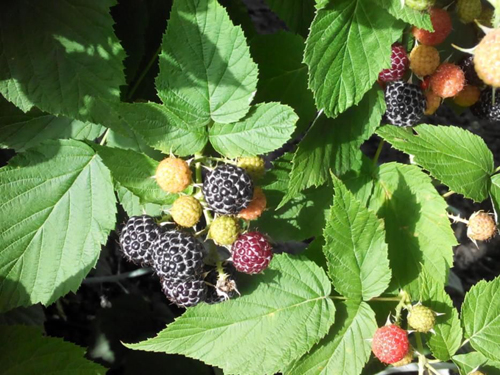
Benefits and composition of berries
The biochemical composition of black raspberries, and in particular Cumberland, differs from red. The chemical composition of the fruit includes minerals, vitamins, phenols and phytosterols, many of which are known for their anticarcinogenic properties. Aronia raspberries have some of the highest antioxidant properties of any berry and have been the subject of numerous health benefits studies.
A large amount of vitamin P and P-active compounds help protect cells from aging, improve the body's immune system, and improve the state of anemia.But the most important property of black raspberry, scientists consider its ability to increase the effectiveness of the fight against cancer. A new study has shown that a number of preventive ingredients found in black raspberries may be more effective in inhibiting cancer development than individual drugs aimed at turning off certain damaged genes. Scientists at Ohio University, USA, investigated the effect of a frozen dried berry concentrate on the genes of mice exposed to a chemical carcinogen that causes esophageal cancer. In experiments, this carcinogen damaged the work of 2,200 genes responsible for the functioning of the esophagus for a week, but 460 of this number restored their normal activity when consuming a powder from a concentrate of dried frozen fruits of black raspberries, included in part of the general diet of rodents.
100 grams of berries contain: calories - 72.54, total fat - 14 grams, protein - 1.35 grams, dietary fiber - 1.68 grams, vitamin A - 38 mg, vitamin C - 2.36 mg, calcium - 32 mg, cholesterol - 0.00, anthocyanins 5.98 mg / g, phenolites 9.80 mg / g.
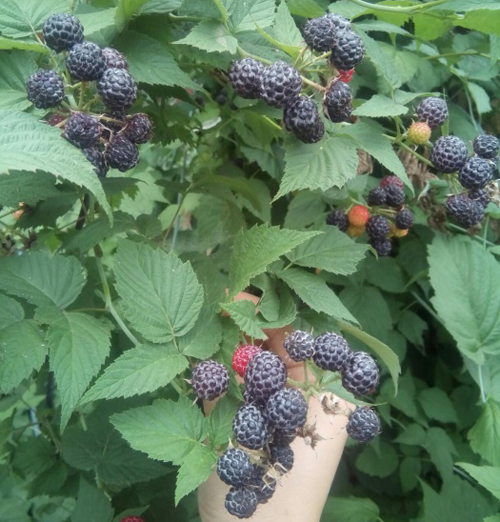
Description of the variety
The plant is powerful, vigorous. The length of the shoots of Cumberland is from 1.5 to 3 meters, the thickness is up to 3 cm, depending on age. Initially, they grow vertically, and then bend and lie on the ground. Shoots are covered with large hook-shaped and tenacious spines along the entire length. The height of the bush itself is up to 2 meters. Young shoots are green-bluish, with a waxy bloom that can be erased when touched. By the end of summer, they become reddish-purple, and closer to winter, they become woody and acquire a brown color. Leaves are light green, medium-large, 5-12 cm long, palm-shaped, oval, corrugated, jagged edges. Covered from below with white hairs and infrequent spines, pubescent from above. Arranged alternately on the stem.
Cumberland bloom begins in early May in the south, in other regions from the middle of the month. Plants look very decorative at this time. Flowers are densely grouped in clusters, Flowers 1-1.5 cm in diameter, dense, small, white, have five petals and five sepals, many stamens and pistils. They are located at the tops of the shoots. This variety is an excellent honey plant, flowers attract a lot of bumblebees and bees.
In Cumberland, as in the summer red raspberry, shoots grow in the first year, and in the second year after wintering, flowers form on them, and then berries are tied. The plant bears fruit on the tops of the shoots and numerous growing sides. On the lateral side, the berries are collected in clusters. Their number sometimes reaches 15-20 pieces. Fruits appear a couple of weeks after the start of flowering, and harvest begins about a month later, when the berries begin to ripen (in the south from early June).
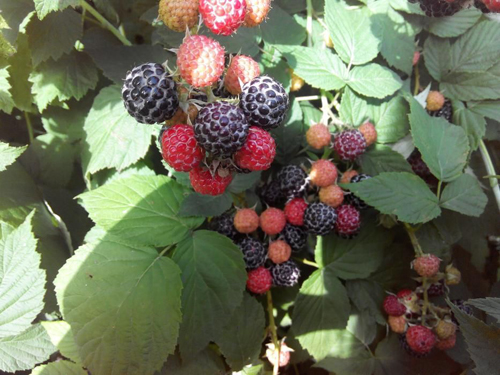
At first they are green, then they turn red, and in the degree of full maturity they are purple-black, shiny, with a gray waxy coating between the drupes. Cumberland berries are small, rounded, 1.5-2.5 cm in diameter. Weight on average 2-3 grams. The berries are easily separated from the fruit, with a dry separation, do not crumble. Drupes are large, rather hard (unlike red raspberries) and slightly tart, tightly linked.
The fruits of the variety are at the stage of full ripeness of a very interesting, really special taste. Sweet, with a rich multifaceted berry aftertaste, there are notes of mulberry, blackberry, red raspberry and, of course, something unique that can be understood only by trying it in person. Another way to determine the readiness of berries for picking, in addition to orientation by color, is that the fruits are easily separated from the fruit at the slightest touch and fall into the hand themselves.
The berries are transportable, they tolerate transportation well over short distances in a shallow container, for example, in plastic booties of 0.5 kg. The fruits are especially good in freezing, the Cumberland jam turns out to be very unusual, tasty, beautiful in color, you can simply grind the berries with sugar, add to compotes, juices. Abroad, the fruits are used for the preparation of famous liqueurs and for the production of natural dyes. They are also dried, used in desserts and, of course, eaten fresh.Our hero is suitable for sale in the markets, but in our country the buyer needs to be taught to such a berry, as was the case with blackberries. But when people taste it, there is a demand immediately. Some sell black raspberries on request.

The variety is quite harvestable. From an adult Cumberland bush, when normalized to 7-10 strong shoots and proper agricultural technology, productivity reaches 10-14 kg. The plant begins to show high results when it reaches 3 years of age. A great way to increase yields is to prune the tops of the growing shoots after they have reached a length of 1.5 meters. This is done in order to increase the number of powerful sides, which account for the main fruiting. When cultivating Cumberland, the trellis is a must. This will greatly facilitate caring for it and will simplify the collection of berries with minimal damage to the hands from its thorns. And of course, it will help to fight uncontrolled "walking" spread over the site. The fact is that if the shoots are not tied up, then when the tops of the earth touch them, the rooting process begins.
Raspberries do not like direct sun in the hot summer months, the berry becomes smaller, and the taste is worse. This is especially true for the southern regions, where in recent years the temperature in the open sun reaches 50 degrees. The most optimal is cultivation in partial shade, but placement in full shade is also possible. But this will not bring the maximum expected results that the variety is capable of. Last year's fruiting shoots (as on blackberries and summer raspberries) are cut out to zero.
Many people use Cumberland as a hedge. It turns out a really impassable obstacle for intruders, moreover, quite beautiful and decorative looking, especially during flowering and fruiting. Plus, this hedge is also delicious. Landing is carried out after 1.5-2.5 meters, depending on what goals are pursued. If the variety is planted for a hedge, then 1.5 meters is quite enough, even 1 meter is enough. But if raspberries are grown as a cultivated plant, aimed primarily at producing berries, then the distance between the bushes should be at least 2 meters. Since, due to powerful, long and thorny shoots with numerous sides, with a denser planting, there will be an impenetrable forest. Another disadvantage of a thickened planting is that the berries inside the bush are poorly pollinated, become smaller, the plant is poorly ventilated, so an outbreak of fungal diseases is possible. Ideally, growing Cumberland requires a light, sour soil, rich in organic matter. Mulching of the root zone and regular abundant watering has a positive effect on the yield and quality of berries.
Raspberries practically do not give root shoots and this greatly facilitates care for gardeners, given the prickly variety. Reproduction takes place by rooting the tops of young shoots, starting in August, after 3 weeks there will already be a full-fledged seedling, which can already be separated from the mother bush. For convenience, you can root the top by dropping it into a pot of soil. In this way, Cumberland reproduces very well.
Our hero is resistant to many diseases and pests, but prone to verticillary wilting (when a recently healthy bush dries out rapidly), is affected by purple spot (dark red ulcer spots on trunks and leaves). These are all fungal diseases. Prevention and treatment - treatment of shoots with copper-containing preparations and soil spillage. Good results are obtained by using systemic fungicides - Fundazol, Topsin. It also happens that the shoots of Cumberland are damaged by the stem gall midge; the beetle can do a lot of harm, especially to young and immature plants. For protection, you need to use insecticide spraying, and also soil spillage from crumbling. For example Aktara, which is suitable for both leaf treatments and root watering.
The variety is very frost-hardy - calmly withstands -35 ° C, hibernates right on the trellis. It is grown without shelter, for example, even in Tyumen.
Cumberland fruits are rich in anthocyanin pigments. However, due to random mutations in genes that control anthocyanin production, yellow-fruited variants of black raspberries are sometimes found. They retain all the distinctive features of this species, except for the color of the fruit, and also ripen a week earlier. The berries are sweet and sour, with an original mint-refreshing taste, whitish-yellow and yellow-orange, transportable. They are more fleshy and dense, and the bush looks even more unusual and decorative during the period of fruit ripening. But the berries of the black-fruited Cumberland are still tastier and sweeter.
At the end of our article, I would like to say that this variety is a really interesting, productive and useful plant, worthy of growing in our garden plots. This is not a super novelty, as some businessmen position it. And this is not ezhemalina, but with blackberries it is similar only in the color of the fruit. Plant, grow, and you will understand everything yourself!
Author: Maxim Zarechny.
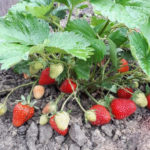
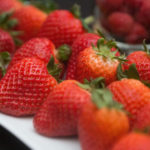
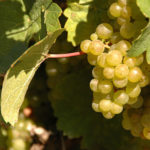
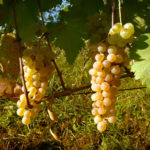
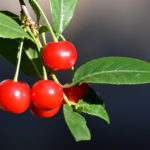
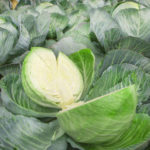



For many years now I have been reading and hearing different opinions - someone classifies Cumberland as a raspberry, someone as a blackberry, as for me it is a typical small-fruited prickly blackberry. Yes, there is a certain charm in its berries - you can eat it with pleasure until another blackberry has ripened, but if other varieties grow on the site, then you don't want to eat Cumberland - the berry is small, "bony", little juicy. The plant requires not only shaping and pruning, but also abundant watering and mulching. The only plus that I find in this variety is its high frost resistance.
These are raspberries, and they are opinions and opinions. In general, how can you compare it with a blackberry ??? And what is small and little juicy - first pay a little attention to the variety. She has a completely different berry than blackberries - both in taste and texture. The same goes for saying that a melon is a small watermelon. And obligatory mulching does not require in any way. Even in our south, not what is in Smolensk!
Wonderful berry, savory, even vrozhayna, non-vicious color, so much corny for people. yes, harvest skin, do not require any kind of non-inviting pratsi.
Frozen does not consume yakosti, deprives, yak svizha.
I love it even more.
Very, very tasty. The taste and aftertaste of Mulberry, the whole family loves. Another plus - it ripens raspberries earlier. (Kharkov)
Black raspberries are delicious. It was planted in the garden several years ago and every year the bushes give a good harvest. The berries are large, dense. During the collection, the porridge will definitely not work. The fruits are stored well.
We grow everywhere like a weed. Fruiting is very abundant, and if you put your hands, then the yields are tripled.
A couple of years ago I also became the owner of Cumberland. The variety is quite unpretentious in care. I rarely water (and grows in open areas!), Nevertheless, the yield is good, the berries are sweet, sweet. They keep their shape perfectly, so I like to close these raspberries in my own juice. The jam turns out to be both tasty and wonderful in appearance: the berries in it are intact. I constantly prune the bushes, preventing them from growing taller than me. Thanks to this, care is easier and the berries are larger.I do not cover for the winter: it winters well and so.
We have this raspberry dusty with yellow remontant and the grown raspberry bush is similar to the black Cumberland, but the berries are orange, and the taste is like yellow raspberries and more delicate.
Collect seeds and breed a new variety!))) Do you have a photo? Interesting to see. I have a yellow Cumberland, his berries become orange when they are already overripe.
The Cumberland should not be left unattended while the shoots are growing. I put them in such a way that when collecting the fruits I get pleasure from it. Usually I lay the shoots on poles at a height of one and a half to two meters, no higher, in the direction I need.
I have this raspberry for the first year, but this is a miracle for Siberia!